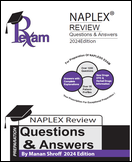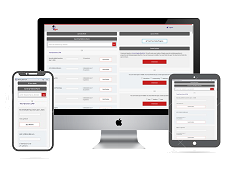
Which of the following information is/are TRUE ABOUT Naloxone? [Select All That Apply].
a. Naloxone hydrochloride is a pure opioid antagonist that competitively binds to μ-opioid receptors only when opioids are present.
b. No tolerance or dependence is associated with naloxone use
c. When comparing the μ-opioid receptor affinity of naloxone with that of most opioids, including heroin, naloxone has a greater affinity to bind to the receptor site.
d. Naloxone has a short duration of activity about 30 to 90 minutes.
Which of the following information is/are TRUE ABOUT Naloxone? [Select All That Apply].
a. Naloxone hydrochloride is a pure opioid antagonist that competitively binds to μ-opioid receptors only when opioids are present.
b. No tolerance or dependence is associated with naloxone use
c. When comparing the μ-opioid receptor affinity of naloxone with that of most opioids, including heroin, naloxone has a greater affinity to bind to the receptor site.
d. Naloxone has a short duration of activity about 30 to 90 minutes.
Answer: (a, b, c and d). Naloxone was patented in 1961, was first approved by the Food and Drug Administration (FDA) in 1971, and is currently on the World Health Organization's List of Essential Medicines.
Naloxone hydrochloride is a pure opioid antagonist that competitively binds to μ-opioid receptors only when opioids are present and bound at the receptor site. Naloxone demonstrates no effect on mu, kappa, or delta receptors in a person who has not taken opioids. No tolerance or dependence is associated with naloxone use.
The reversal of opioid toxicity with naloxone is dose dependent. Individuals who have used a particularly potent opioid (e.g., fentanyl), have high concentration of opioids in their system, or have used a long-acting opioid may require more frequent and/or larger doses of naloxone to reverse symptoms.
When comparing the μ-opioid receptor affinity of naloxone with that of most opioids, including heroin, naloxone has a greater affinity to bind to the receptor site. This mechanism allows naloxone to remove the opioid from the receptor site and then bind it more securely. When this occurs, respiratory depression resolves partially or fully (depending on the amount, form, and route of opioids taken), hypotension resolves, and CNS depression abates.
Depending on the type of opioid used, the individual may be at risk for experiencing rebound opioid toxicity and/or acute respiratory depression because of the short duration of activity of naloxone (i.e., 30-90 minutes).
This effect most often occurs when an individual has taken a long-acting opioid such as methadone or extended-release oxycodone. Naloxone's short duration of action is an important reason to convey to patients that receiving emergency medical care for an opioid overdose is important, even if the person has responded to the naloxone.
Naloxone is not effective in treating overdoses of non-opioid prescription medicines like benzodiazepines or barbiturates. It also is not effective in overdoses with stimulants, such as cocaine and amphetamines, or other non-opioid illicit drugs such as MDMA (Ecstasy, Molly), GHB (G), or ketamine (Special K). However, a polysubstance overdose that includes opioids warrants the use of naloxone.
Try our Naplex QBank. www.pharmacyexam.com **Please note: This type of question will not show up in an MPJE. We are just posting to MPJE group for knowledge.



